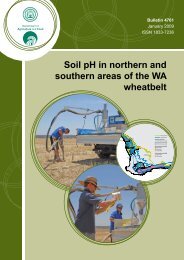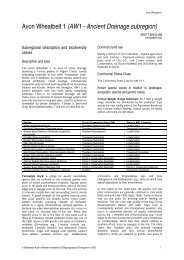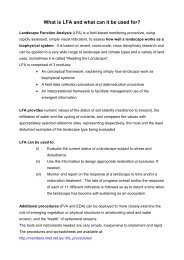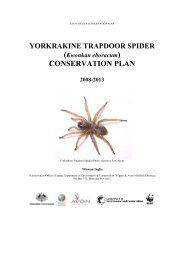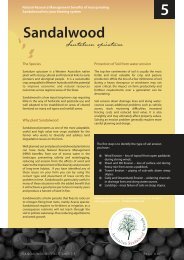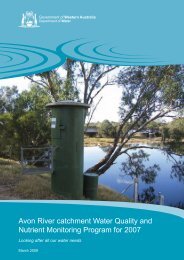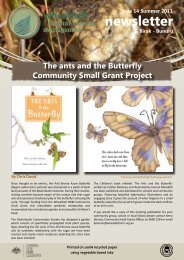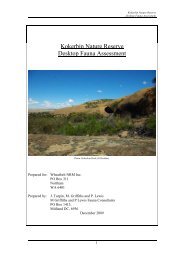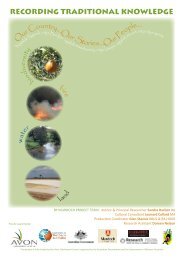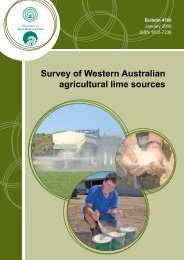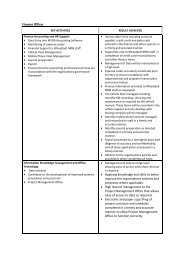Tree-Stem Trapdoor Spider (Aganippe castellum) - Wheatbelt NRM
Tree-Stem Trapdoor Spider (Aganippe castellum) - Wheatbelt NRM
Tree-Stem Trapdoor Spider (Aganippe castellum) - Wheatbelt NRM
You also want an ePaper? Increase the reach of your titles
YUMPU automatically turns print PDFs into web optimized ePapers that Google loves.
1. INTRODUCTIONThe <strong>Tree</strong>-stem <strong>Trapdoor</strong> <strong>Spider</strong> (<strong>Aganippe</strong> <strong>castellum</strong>) belongs to the suborderMygalomorphae, commonly known as “<strong>Trapdoor</strong>” and “Funnel-web” spiders. Theyare primarily terrestrial burrowing spiders which occasionally make tubular silk nestson tree trunks. Mygalomorphs are able to persist in small isolated areas due to theirlow dispersion powers, long life cycle and sedentary life style (Main, 1987a).Mygalomorph spiders take several years to reach reproductive maturity, and femalescan live up to and exceeding twenty years. Mature males leave their burrows duringmoist conditions in search of females, and die shortly after mating (Main, 1985, Yen& Butcher, 1997). Females lay their eggs in a silk cocoon in the burrow, and afterspending several months confined to the parent burrow, spiderlings emergeapproximately one year after the parental mating (Main, 1982).In areas that experience drought, mygalomorph spiderlings disperse from theirmother’s nest during or following rainy weather, and establish a new burrow in rainsoftenedsoil. During this process, juveniles are vulnerable to predation by birds,mammals, lizards, frogs and other arthropods (Main, 1985).Predators of A. <strong>castellum</strong> include other arthropods (eg. Centipedes and Scorpions)which enter burrows, Goannas and Bandicoots which dig out burrows and PompilidWasps, some of which specialize in preying upon burrowing spiders (Main, 1985). Amajor threat to A. <strong>castellum</strong> includes the loss or alteration of habitat due to theirspecialized habitat requirements, which may restrict them to microhabitats that haveonly subtle differences to adjacent ones. As a result, physical disturbance to thesemicrohabitats can cause local extinction of populations (Main, 2002).3



